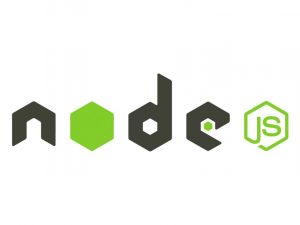In this tutorial, we’ll create a simple RESTful API using Node.js and Mongoose, a MongoDB object modeling tool designed to work in an asynchronous environment. We’ll set up a basic Node.js server, define a schema using Mongoose, and create endpoints for CRUD operations (Create, Read, Update, Delete) on a “Todo” resource.
Prerequisites
- Node.js installed on your machine
- MongoDB installed locally or accessible remotely (you can also use a cloud MongoDB service like MongoDB Atlas)
- Basic knowledge of JavaScript and RESTful APIs
Step 1: Initialize a Node.js Project
First, let’s create a new directory for our project and initialize a new Node.js project.
mkdir nodejs-mongoose-api
cd nodejs-mongoose-api
npm init -yStep 2: Install Dependencies
We’ll need Express for our server, Mongoose for MongoDB object modeling, and Body-parser for handling request bodies.
npm install express mongoose body-parserStep 3: Set Up the Server
Create a file named server.js and set up a basic Express server.
// server.js
const express = require('express');
const bodyParser = require('body-parser');
const mongoose = require('mongoose');
const app = express();
const PORT = 3000;
app.use(bodyParser.json());
// Connect to MongoDB
mongoose.connect('mongodb://localhost:27017/todo', {
useNewUrlParser: true,
useUnifiedTopology: true,
});
const Todo = mongoose.model('Todo', {
title: String,
description: String,
done: Boolean,
});
// Routes
app.get('/api/todos', async (req, res) => {
try {
const todos = await Todo.find();
res.json(todos);
} catch (err) {
res.status(500).send(err);
}
});
app.post('/api/todos', async (req, res) => {
const { title, description } = req.body;
const todo = new Todo({
title,
description,
done: false,
});
try {
await todo.save();
res.status(201).json(todo);
} catch (err) {
res.status(400).send(err);
}
});
app.put('/api/todos/:id', async (req, res) => {
const { id } = req.params;
try {
const todo = await Todo.findByIdAndUpdate(id, req.body, { new: true });
if (!todo) {
return res.status(404).send('Todo not found');
}
res.json(todo);
} catch (err) {
res.status(400).send(err);
}
});
app.delete('/api/todos/:id', async (req, res) => {
const { id } = req.params;
try {
const todo = await Todo.findByIdAndDelete(id);
if (!todo) {
return res.status(404).send('Todo not found');
}
res.json(todo);
} catch (err) {
res.status(400).send(err);
}
});
app.listen(PORT, () => {
console.log(`Server is running on port ${PORT}`);
});Step 4: Run the Server
Now let’s run our Node.js server.
node server.jsYour server should now be running on http://localhost:3000.
Step 5: Test the API Endpoints
You can use tools like Postman or curl to test the API endpoints.
GET /api/todos
curl http://localhost:3000/api/todosPOST /api/todos
curl -X POST -H "Content-Type: application/json" -d '{"title": "Do laundry", "description": "Wash clothes"}' http://localhost:3000/api/todosPUT /api/todos/:id
Replace :id with the ID of an existing todo.
curl -X PUT -H "Content-Type: application/json" -d '{"done": true}' http://localhost:3000/api/todos/1DELETE /api/todos/:id
Replace :id with the ID of an existing todo.
curl -X DELETE http://localhost:3000/api/todos/1Conclusion
This API allows you to perform CRUD operations on a “Todo” resource. This is just a starting point, and you can expand upon this by adding more routes, validations, error handling, and authentication as needed for your application.


